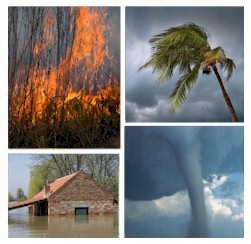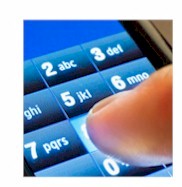|
|


Emergency Response Systems
 This section of our technical library presents articles written about Emergency Alert Systems and Disaster Recovery definitions, terms and related information.
This section of our technical library presents articles written about Emergency Alert Systems and Disaster Recovery definitions, terms and related information.
The 911Broadcast emergency notification and alert service can deliver a large number of phone calls using a network of phone systems employing digital phone lines simultaneously. Should a disaster such as a snow storm, wild fire or flood hit your area, 911Broadcast systems can alert your community quickly providing specific instructions if an evacuation is required.
This service is available using our emergency broadcasting systems. If a dangerous chemical spill occurs in your community, you can target specific areas to call. If a severe snow storm hits your area, your community can be notified of school closings or event cancellations.
911 Emergency and VOIP
VOIP and emergency 911 calls still lack the compatibility required for general acceptance and use by the general public.
In an article "911 over VoIP: whose responsibility?"
by Ray Peckham from www.comnews.com, Mr. Peckham states "The debate over whether VoIP calls are an “information service” or a regulated “telecommunications service” may rage on for some time in this election year. At stake are access charges, universal service funds and telecom excise taxes. Meanwhile, under the dust storm of political posturing is the concern of how 911 compliance could affect enterprise VoIP implementations.
“Two challenges for providing 911 are that most VoIP services are portable and phone numbers no longer need to be tied to geographic regions,” explains Jamie Serino, a spokesperson for Vonage. “So, it can be difficult to determine where the call is coming from.”
The company’s current 911 solution requires customers to enter the address where the service will be used. The address is then used to find the nearest public safety answering point (PSAP), which is where the 911 call will be routed.
“Some service providers enable the user to define his geographic location so that authorities will know the location,” says Irit Gillath, VP of IP product line management at Telco Systems. “This solution provides only a limited 911 answer, as it needs to be preconfigured in advance and may not help if the phone is used by someone in a different location.”
According to Gillath, another solution is automatic routing of 911 calls from VoIP service to a PSTN line–a method Telco Systems’ VoIP products use to ensure that a 911 call will be delivered. “The drawback is that a business needs to maintain a PSTN line even if the organization is fully VoIP,” she says.
“There will be requirements on IP PBXs to provide location information for an IP device that could move throughout the enterprise, and may be a wireless device,” says Chuck Rutledge, VP of marketing for Quintum Technologies. “The result will place requirements on the enterprise IP infrastructure to support identification of the position of an IP device making a 911 call. Carriers will also need to support the processing of 911 communications that arrive via VoIP.”
Rutledge also recognizes that a short-term solution lies in utilizing the existing telephone network to address 911 requirements. The company’s product provides connectivity to both the IP network and the PSTN, and identifies 911 calls and converts them into a traditional PSTN call.
Serino says another possible solution would involve access to the 911 trunks, allowing an address database to be appended to the trunks so that address information could be passed off to the call center along with the call. “We would like to see VoIP providers have access to the 911 trunks. Currently, you have to be registered as a CLEC to have access to the trunks.”
John Morgan, VP of wholesale product development for Level 3 Communications, agrees that “the highest-quality, most-reliable, long-term solution to this problem is direct trunking.” As a result, Level 3 is building dedicated connections from its network to PSTN switches that support the PSAPs in all the markets it plans to offer VoIP services.
VoIP providers are working with the National Emergency Numbering Association (www.nena.org) to devise a long-term VoIP 911 solution. So far, they have outlined three phases of deployment, according to Morgan, including the limited method of 10-digit routing of calls across the PSTN to administrative PSAP lines, but this does not support full E 911 functionality or have the highest reliability, and could potentially undermine the mechanism for PSAPs to audit 911 surcharge remittances.
As a second stage, Morgan expects NENA to recommend carriers support full E 911 capability and geographic portability of numbers. He foresees the third phase of the NENA roadmap will address the eventual elimination of the 911 Tandems in the network and the full IP enablement of the PSAP. When this occurs, a new world of emergency services becomes possible.
“If GPS technology improves,” says Serino, “locating the caller will be easier. The future of 911 in a data world is very interesting. Perhaps when a call is routed to the fire department, the blueprint of a person’s home can also be sent with the call. A call routed to the hospital could contain a person’s medical records.”
Until then, Morgan emphasizes the need for enterprises to focus on tracking their mobile devices. “It will be incumbent on enterprise administrators to manage the location tracking of IP-enabled phones,” says Morgan. He highlights that proprietary solutions do exist to assist telecom managers in this area.
“The burden for maintaining information needs to be on the end-user,” says James Puchbauer, director of marketing at AltiGen Communications. He points out that the E 911 translation table will be located in the public service and dispatch agency’s system. “If you move an employee’s locations, you will have to notify the PSAP, as it won’t happen automatically,” he says. “The public safety agency will not be aware of the changes unless the company regularly updates them for all appropriate changes.”
Activating Your Emergency Broadcasts
DSC systems allow you to initiate an emergency broadcast using several methods. Because emergencies can arise at any hour of the day or night, we have provided these multiple techniques so that you are not required to staff a center 24 by 7.
- Emergency Control Center
- DSC provides an Emergency Control Center PC interface to our phone systems that manages one emergency phone dialer or an entire network of dialers. Our emergency control program runs either on your local dialer or on the network where your dialer resides. This program lets you download phone lists and emergency phone messages and initiate the emergeny broadcast.
This program likewise lets you configure your network or emergency dialers and produces reports on the performance of your system or network.
- Web Based Control Center
- Our web based emergency notification system lets you access a web page for managing and activating emergency broadcasts. After entering a secure user id and password, you can download phone lists and recorded emergency messages. Using a menu selection, you can select any phone list/message combination to be broadcast online and initiate the emergency alert.

- Phone Activated Emergency Dialing
- If you are not able to access the internet and use our web based emergency dialing interface, we allow you to initiate an emergency phone campaign using a simple touchphone into our phone system.
After properly validating your account id and password, the phone system lets you select a pre-recorded messsage (or record one while you are on the phone). It then prompts you to identify the list of phone numbers to be called (previously maintained under your account). Finally this phone program will let you listen to the message to be sent and inform you of the size of the list of numbers to be called as a final check. If everything is ok, then pressing a touchphone key activates the calling program.
- Computer Activated Dialing
- Our emergency notification network also supports computer and web connectivity using XML technology. Thus, emergency communication can be initiated from your website or computer by automatically sending our emergency phone system a message containing a list of one or more phone numbers and a message to be sent to these individuals. The message can be text (which is automatically converted to voice) or a voice file.
For further information, visit our Emergency XML messaging web page.
|




 This section of our technical library presents articles written about Emergency Alert Systems and Disaster Recovery definitions, terms and related information.
This section of our technical library presents articles written about Emergency Alert Systems and Disaster Recovery definitions, terms and related information.
